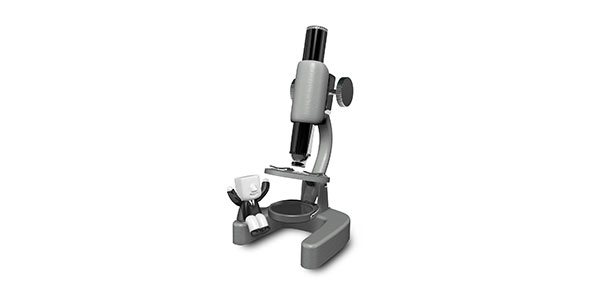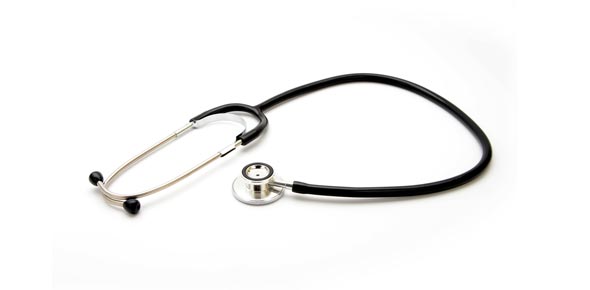Related Flashcards
Related Topics
Cards In This Set
| Front | Back |
|
Viv Sanders
Paragraph:5and 6(HTML)
|
"Although uneducated, freed slave Sojourner Truth spoke so eloquently against slavery that hecklers in Indiana in 1858 swore she was a man -- until she exposed her breasts. When black men were enfranchised (1870), Truth sought the vote for black women. Her fame is attested by her meeting with President Lincoln and her bestseller, The Narrative of Sojourner Truth.
Tubman was also a best-selling author and advocate of greater racial and sexual equality. Born to a slave family, she escaped and rescued over 300 other slaves through her escape route network. She spied for the Union in Confederate territory in the Civil War, risking capture and re-enslavement."
|
|
Viv Sanders
Paragraph:39(HTML)
|
"Davis' life reflects the increasing educational opportunities for blacks, the rise of black radicalism and the federal government's hostile response to it. She reminds us how interpretations of black activism differ according to the writer's viewpoint. A heroine to some, Davis remains a dangerous subversive to others. She is perhaps unrepresentative of the black power movement, which some historians see as having promoted a misogynistic cult of masculinity."
|
|
Viv Sanders
Paragraph:38
|
"Born in Birmingham, Alabama, in 1944, Angela Davis came to prominence when the black power movement was at its peak. Her parents were teachers, NAACP members and Communist Party sympathisers. When she was four, the family moved from a federal housing project to a white neighbourhood, nicknamed 'Dynamite Hill' when resentful whites attacked incoming blacks. Educated in Birmingham's vastly inferior segregated schools, Davis gained degrees in Northern and European universities. Membership of the Communist Party got her fired from teaching at the University of California. In 1970 she led a campaign to help three black prisoners accused of murdering a white prison guard. Davis believed they had been framed. One man initiated a courtroom gun battle to support his imprisoned brother. Two of his guns were registered in Davis' name, and so she appeared on the FBI's Ten Most Wanted list until captured and imprisoned. A popular international movement to 'Free Angela Davis' made her an iconic figure. Acquitted, she continued campaigning for equality and prison reform (blacks always constitute a disproportionate number of American prisoners)."
|
|
Viv Sanders
Paragraph:24
|
"Parks illustrates growing black activism and the Montgomery Bus Boycott shows the importance of whole community action, particularly that of women. Sometimes girls stood up for their rights. After the Supreme Court ruled against segregated education, nine black children, three of whom were girls, tried to enter Central High School in Little Rock, Arkansas, in 1957. Local NAACP activist Daisy Bates coordinated the children's journey past hate-filled white mobs into school. Inside school, they were ostracised, verbally abused, tripped and kicked. Melba Pattillo had acid thrown at her. Pattilo's inspirational grandmother urged perseverance: 'Warriors don't cry'. Bates and the children's families suffered job losses and death threats."
|
|
Viv Sanders
Paragraph:23
|
"Alabama-born Rosa Parks (1913-2005) is perhaps the single most famous black American female. Her refusal to give up her bus seat for a white man triggered off the Montgomery Bus Boycott, which many historians consider to be the start of the civil rights movement. Her act of heroic defiance brought her fame, the sack, death threats and jealousy from the men within the civil rights movement in Montgomery. (See 'Rosa Parks and the Montgomery Bus Boycott', History Review September 2006, pp. 3-8.) Yet many other women were also important in the boycott. 300 members of the Montgomery Women's Political Council (WPC) distributed leaflets to co-ordinate the boycott. Some women fund-raised, others walked miles to work every day for a year. 'My feets is tired, but my soul is rested', said one 80-year-old. Many ministers wanted to stop the boycott after one day, but their female parishioners disagreed. Women too were physically threatened. The WPC chairwoman had acid poured over her car. Like Parks, she received death threats and lost her job".
|
|
Viv Sanders
Paragraph:21
|
"In 1939 President Roosevelt appointed Bethune director of the New Deal's National Youth Administration (NYA), the first black to occupy such a high-level position. As director, she increased black employment opportunities, obtaining over 20 high-level positions for black administrators and countless jobs for ordinary black youths. She organised the small group of black officials in the Roosevelt administration into the so-called Black Cabinet, which focused federal government attention on black problems, advocated black civil rights, and fought against lynching and the poll tax (a tax on voting that hit blacks hard). She stressed that black equality was necessary for Cold War propaganda against the USSR."
|
|
Viv Sanders
Paragraph:14 -16
|
"Wells turned to local issues. She helped Southern blacks adjust to Chicago life, mobilised women to campaign for the vote and worked to elect Chicago's first black alderman, Oscar DePriest. After World War I, demobilised black soldiers were seen as a threat to white jobs, leading to nationwide disturbances. Wells and her lawyer husband defended blacks accused of 'rioting'. She also helped established a Chicago branch of the first black trade union, A. Philip Randolph's Brotherhood of Sleeping Car Porters.
W.E.B. Du Bois, another founding member of NAACP, said that Wells helped 'awaken the conscience of the nation', but her 'work has easily been forgotten because it was taken up on a much larger scale by the NAACP and carried to greater success'. Wells certainly made lynching a national issue and contributed to its decrease in the 1890s."
|
|
Viv Sanders
Paragraph:12
|
" A race so recently enslaved and uneducated could not suddenly produce leaders, especially since black disfranchisement stopped Southern black men entering politics. However, regarded as less threatening by whites, women gained experience in voluntary church organisations. Black women's clubs emerged in the late 1890s. After the president of the Missouri Press Association attacked Wells, defended lynching and criticised all black women as prostitutes, liars and thieves, infuriated black clubwomen called a national conference in Boston. This led to the establishment of the National Association of Colored Women (NACW). By 1900, it had 300 local clubs; by 1915, 50,000 members. NACW denounced lynching and disfranchisement, but, powerless to stop them, turned to local community work."
|
|
Viv Sanders
Paragraph:9
|
"Urbanisation and increased black literacy had produced a flourishing black press, so Wells became a journalist. She wrote about lynching, focusing on the white claim that lynched black men were all rapists. Her sex-and-violence subject-matter won a large audience. She criticised blacks as a 'disorganised mass', passively accepting oppression, and applauded 'true' men in Kentucky who burned white property in retaliation for lynching. Her writing got her expelled from Memphis. Like many Southern blacks, she migrated North where life was better: black males could vote and not all public places were segregated."
|
|
Catherine Gourley
Paragraph:28
|
"The Freedom Riders accomplished their goal. Public disgust over the treatment they received helped to spur government action. Attorney General Robert Kennedy pressured bus companies and government agencies to protect the Riders. And, by the end of the summer, the Interstate Commerce Commission had outlawed segregation of transportation facilities in a ruling more specific than the Supreme Court decision. "Whites only" and "blacks only" signs began to disappear."
|
|
Catherine Gourley
Paragraph:26(html formaT)
|
"Despite the violence in Anniston, the Freedom Ride continued. In Montgomery, Alabama, the worst of the violence struck. John Lewis, now a United States congressman from Georgia, was then a college student and Freedom Rider. He recalled the violence he experienced in an interview with CNN:We were beaten in Birmingham and later met by an angry mob in
Montgomery, where I was hit in the head with a wooden crate. It
was very violent. I thought I was going to die. I was left lying
at the Greyhound bus station in Montgomery, unconscious."
|
|
Catherine Gourley
Paragraph: 20(in html format)
|
"William Mahoney was a student at Howard University in Washington, D.C., when he volunteered to become a Freedom Rider. He later wrote about his experience in Liberation magazine.At our first stop in Virginia, I was confronted with what the
Southern white has called "separate but equal." A modern rest
station with gleaming counters and picture windows was labeled
"White," and a small wooden shack beside it was tagged "Colored."
The colored waiting room was filthy, in need of repair, and
overcrowded. When we entered the white waiting room, Frank Hunt
[another Freedom Rider] was promptly but courteously, in the
Southern manner, asked to leave. Because I am a fair-skinned
Negro, I was waited upon. I walked back to the bus through the
cool night, trembling and perspiring."
|
|
Catherine Gourley
Paragraphs:8 and 9
|
"In those letters, six white and seven black men — including Farmer — explained what they intended to do. They would board buses in Washington, D.C., and ride through Virginia, then North Carolina, and then through the Deep South to New Orleans, Louisiana. At rest stops along the way, they would ignore the "whites only" and "colored only" signs posted at snack bars, in waiting rooms, and on restroom doors. The whites would enter the areas designated for blacks. The blacks would enter the areas reserved for whites.
The activists would not be breaking any laws. A year earlier, in 1960, the United States Supreme Court had ruled that segregation on interstate transportation and in terminals was illegal and ordered states to end it. But some states had ignored the Supreme Court ruling. The purpose of the "Freedom Ride" was to pressure authorities to enforce the desegregation law."
|
|
Catherine Gourley
Paragraph:6
|
"The Freedom Riders were activists in the civil rights movement, the campaign to win legal equality for African Americans that fought its most dramatic battles in the 1950s and 1960s. They had a goal: to desegregate public facilities in the American South. They had a plan. And they made no secret of that plan."
|
|
Andrea McEvoy Spero
Page:4 Paragraph: 1
|
"In Eyes off the Prize {2003), Carol
Anderson argues:
How could all of the blood, all of the courage,
and all of the martyrs of the Civil Rights Movement
still leave in its wake a nation where schools are
more segregated than ever, where more than half
of all black children live in poverty, and where the
life expectancy of African Americans has actually
declined? The answer lies, I beheve. not so much
in the well-documented struggle for civil rights, but
in the little known, but infinitely more important,
struggle for human rights"
|








